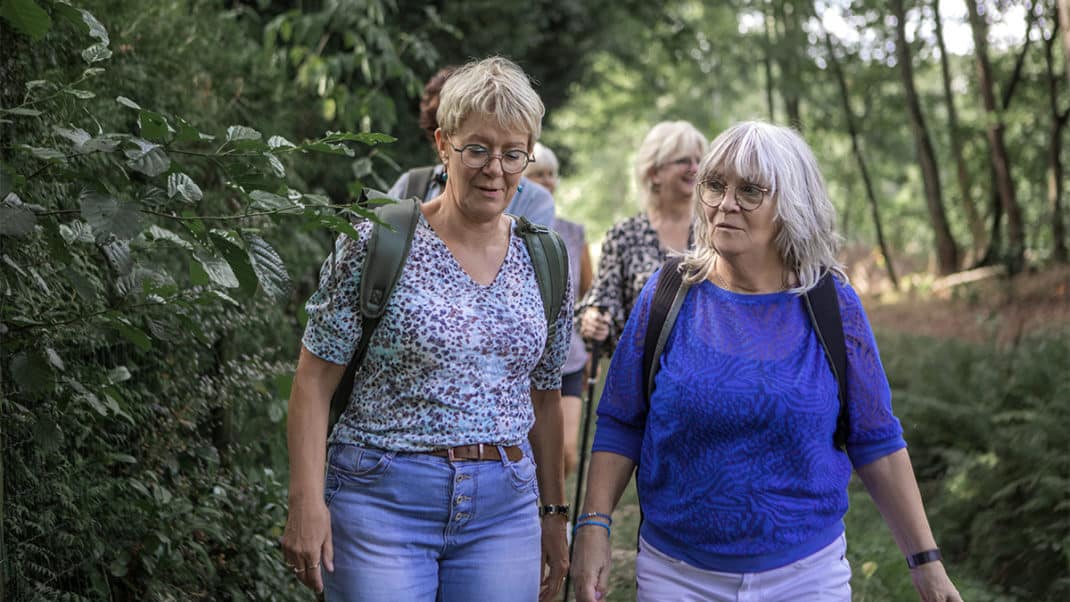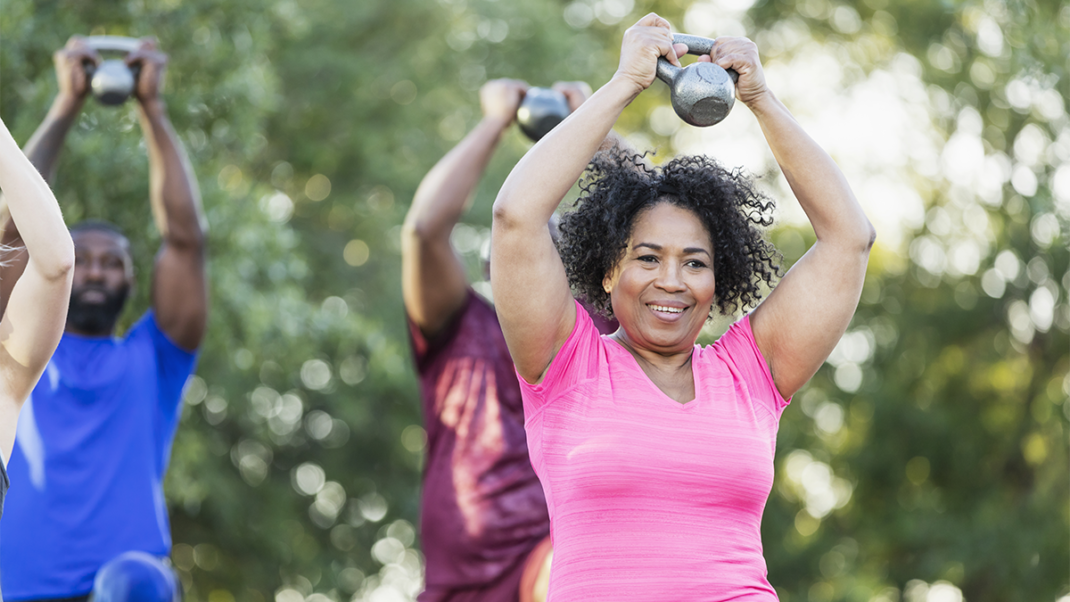A Studio Society
Create a positive program experience by fostering and developing participant relationships.
Step into almost any fitness facility and you’ll likely be overwhelmed by the vast array of high-tech equipment available to members. With so many options, why are people still interested in group fitness? Put simply, it’s the opportunity to participate and share in an experience.
Traditionally, businesses focus on selling goods or services. Yet a truly positive experience occurs when people interact with each other in a unique environment like a fitness class. Strong relationships create class loyalty, which positively impacts member retention in the long run. Instructors hold the key to creating this “studio society,” and their efforts improve the overall experience for everyone.
Building a community feel among class members starts with the person standing at the front of the room. The minute an instructor walks into a studio, participants are watching her every move. Body language says a great deal, so it’s essential to convey a positive and welcoming demeanor. Making a good first impression also means being prepared and connecting with participants in a warm and sociable setting. The room itself is a good place to start. Prior to class, organize the exercise studio and play upbeat background music. A space that is too quiet may feel uncomfortable and intimidating. Ambient music creates a cozy atmosphere and provides a backdrop for easy conversation.
Although an instructor’s “standard” greeting is a good basic opening for a class, it doesn’t encourage an interactive environment. First-time participants often want to avoid being singled out and won’t always respond to the question “Is anyone new in class today?” Instead of waiting for the beginning of class for introductions, allocate time before the workout to greet each attendee at the door. Geoff Bagshaw, international fitness presenter and full-time group fitness instructor in Toronto, assimilates newcomers by capitalizing on the kindness of his regular students. “After introductions, I ask one of my regular students to help the new member get set up,” says Bagshaw. “This interaction helps the new student feel welcome, provides a friendly face for future classes and frees up my time to greet others while I’m getting ready to teach.”
Warmly welcoming each participant, learning students’ names and introducing members to each other should become standard practice. “I have found that by learning participants’ names and using them in class, members are far more likely to strike up a conversation with each other and develop better rapport,” says Bagshaw. Don’t forget that sincere compliments go a long way. Noticing a haircut, acknowledging consistent attendance or admiring a new outfit will put a smile on a student’s face. Recognition makes all participants, both regular and new, feel valued and more likely to return. As class numbers grow, retention rates rise and member interaction improves.
Another way to encourage connection among participants is to use icebreakers at the beginning of class. The key is to keep them short, simple and not too personal. Here are some examples:
- Ask participants to introduce themselves to one person they don’t know.
- Ask each person to locate someone born in the same month, someone who enjoys a similar recreational activity or someone with the same astrological sign.
- Initiate a conversation about an uncontroversial current event or a popular television show.
These types of openers generally take about 1–3 minutes to organize, and they add to both the new and the returning students’ experience. It’s often surprising to learn how many members have been exercising beside one another for years, yet don’t know each other’s names (and are too shy to introduce themselves). Icebreakers help. The extra chatter creates a more social and lively environment, and members who get to know each other by name are often more likely to show up for future classes, because they feel more accountable.
There are also a number of ways to foster participant interaction during a workout itself. Julie McNeney, chief operating officer for the International Council on Active Aging® and a fitness instructor in Vancouver, British Columbia, for 24 years, loves adding a move she calls the “party mixer” to her classes whenever she can. “The trick to the mixer,” says McNeney, “is to get the entire group into a simple holding move such as [a series of] hamstring curls. Then, I call out ‘party mixer’ and encourage everyone to travel around the room saying ‘hi’ or smiling at each other. The energy and interaction in the room jump twofold, and everyone has a great time. Eventually we all make it back to our favorite spots and the workout continues on an even higher note.”
Katharine Chamberlain, programming and events coordinator for the Alliance Fitness Corporation in southwestern Ontario, monitors heart rates during classes by having her students perform an actual talk test with their neighbors. “In some classes, the talking gets a bit out of hand and we need to stop the chatter in order to continue,” says Chamberlain. “It has become a very fun and favorite part of class.”
Mindy Mylrea, 1999 IDEA Fitness Instructor of the Year, likes to play a game called “Getting to Know You” in the cool-down or warm-up segments of her classes. “I ask a question that has four answers, and participants move to the place in the room I have delegated for their answer,” says Mylrea. “For example, I ask people with only girl children to run to one wall, people with only boy children to another wall, both sex children to another wall and no children to the other wall. They can then see who they have that item in common with.” Other question topics include age, birth month and favorite season—“anything to open up the lines of communication and get participants connecting.”
Class and club events are another fabulous way to improve participant camaraderie. In many facilities, membership appreciation days have become a program staple. Linda Freeman, group fitness instructor for Bellin Fitness Centers in Green Bay, Wisconsin, participates in up to six member appreciation soirees per year. “Our events are usually held on a Friday night and have a theme, such as family fitness or belly dancing,” she says. “We invite members to attend for free, and we welcome family members and friends to participate for $2. We provide snacks, nonalcoholic beverages and fun activities. Everyone has a great time, and the biggest benefit is that members get to know each other outside of the workout studio.”
The holiday “jingle bell mingle” became a yearly favorite at The Fitness Group in Vancouver. Members would tie bells to their shoes and participate in popular, team-taught classes in which different instructors led 5- to 7-minute segments. The house gave out prizes during the workout and after class, and everyone mingled over light refreshments. Participants wrote positive comments and shared how many years they had been a member in a special member guest book.
If larger-scale events are difficult to organize, plan special theme classes, such as a Halloween dress-up or a Valentine “wear red” workout. Members also get motivated by special causes. Collect nonperishable items for a food bank, raise money for breast cancer research or help a fellow participant who has lost everything in a house fire. These ideas create a single purpose that people can rally around. Barbara Crompton, chief executive officer for The Fitness Group in Vancouver, was touched by her members’ generosity. “I was traveling to Nepal several years ago and asked if anyone had toys or clothing they would like to give away to the children,” says Crompton. “Not only did I receive bags and bags of donations, but [the project] created both a common goal and a conversation piece for members.”
Relationship building strengthens membership retention and creates a home away from home for many. Linda Freeman’s morning students have even initiated their own e-mail, phone and address list. “Two to three times a year participants plan a fun outing,” says Freeman, “but more importantly, when someone is sick or having family problems, they send cards and deliver meals to the home.”
It takes more than hiring talented fitness instructors to build and nurture successful classes and programs. Although great music and good instruction are important to the outcome, it’s relationship building that truly strengthens a member’s experience. Familiar faces, comfortable environments and a community feel unite participants and keep them coming back.
Warmly welcoming each participant, learning students’ names and introducing members to each other should become standard practice.
Fine-Tune Your Strategies
If improving participant interaction sounds like a good idea but seems too challenging to spearhead, start with one or two key classes. Different time slots cater to slightly different audience bases. A 6:30 am group won’t have the same characteristics as a 9:00 am or a 5:30 pm class. For example, the early-morning crowd is more likely to want to get in, work out and get on with the day; participants tend to keep the chatter to a minimum but are very loyal to each other and the class. The 9:00 am crowd seems to be more social—moms getting together and sharing common interests. The 5:30 pm crowd loves a highly charged and energetic workout to help them unwind from a stressful day. Keep this in mind when creating connections. Offer the 6:30 am group an attendance challenge. Organize a postworkout coffee group for the 9:00 am class. Give the 5:30 pm bunch a physical partner-challenge.
Krista Popowych
Krista Popowych inspires fitness leaders, trainers and managers around the globe with her motivating sessions. She is the 2014 IDEA Fitness Instructor of the Year and a three-time (2016, 2008, 2003) canfitpro Canadian Fitness Presenter of the YearShe is Keiser’s global director of education, as well as a Balanced Body® master trainer, JumpSport® consultant, DVD creator, published writer, Adidas-sponsored fit pro and IDEA Group Fitness Committee member.






